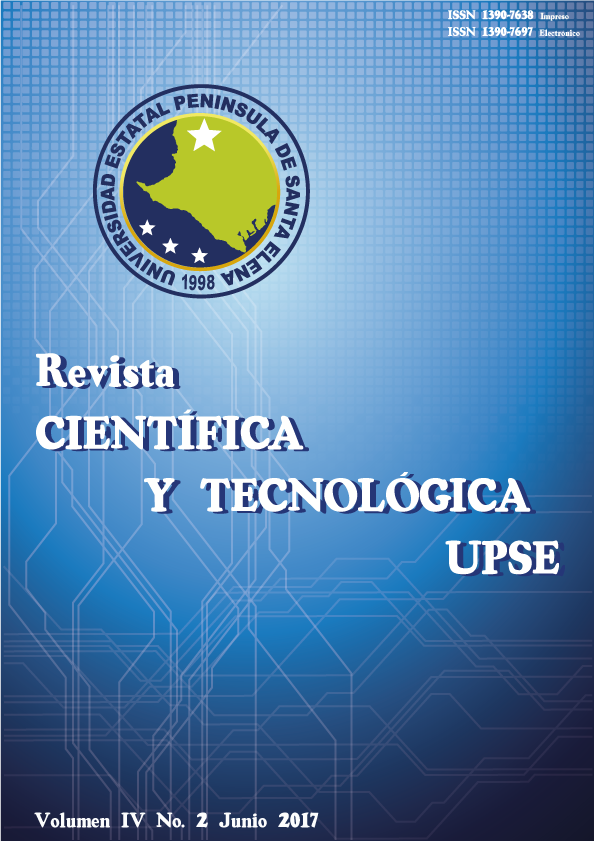La gestión de los ingresos y su incidencia en la inversión pública del Gobierno Autónomo Descentralizado Municipal de Salinas (GADMS), período 2010 – 2016
DOI:
https://doi.org/10.26423/rctu.v4i2.271Palabras clave:
GAD Salinas, gestión, presupuesto, inversiones, transferenciasResumen
La presente investigación se centra en el estudio y análisis de la gestión de los ingresos y su incidencia en la inversión del Gobierno Autónomo Descentralizado Municipal de Salinas GADMS, período 2010 – 2016, y se fundamenta en la Constitución de la República del Ecuador (2008), Plan Nacional del Buen Vivir, COOTAD, y Plan de Desarrollo y Ordenamiento Territorial del cantón Salinas. El tipo de investigación utilizado fue el descriptivo, los métodos que aportaron al estudio fueron analítico, sintético y reflexivo, y la técnica de análisis documenta; se revisó documentos y estudios relacionados con la gestión de los ingresos y la realidad de las necesidades básicas de la población del cantón Salinas. Los resultados indican que el GADMS carece de políticas idóneas de gestión de cobro y disciplina fiscal, situación que limitó la atención de las demandadas de sus parroquias. Se evidencia que la hipótesis planteada no permite satisfacer las necesidades básicas de la población; por lo tanto, es verdadera. En el 2016 se actualizó el catastro, sin embargo, los recursos fueron insuficientes para atender las necesidades registradas en el PDOT 2014 – 2019. La mayor recaudación de los ingresos de toda entidad pública de esta naturaleza, está en función de las iniciativas y grado de responsabilidad de los gerentes públicos y directivos, de las políticas internas de gestión de cobro que se implementen y de la dirección efectiva e integrada de los procesos de creación de valor público.
Descargas
Referencias
Asamblea Nacional. (20 de octubre de 2008). Constitución de la República del Ecuador. Quito, Pichincha, Ecuador.
Basavilbaso, E. (2011). Gestión por Resultados en la Administración Pública.Buenos Aires.
Corporación de Estudios y Publicaciones. (Febrero de 2012). Código Orgánico de Organización, Autonomía y Descentralización. Quito, Pichincha, Ecuador: Taller de la Corporación de Estudios y Publicaciones.
Corporación de Estudios y Publicaciones. (Abril de 2012). Código Orgánico de Planificación y Finanzas Públicas, Tomo III. Manual General de Contabilidad Gubernamental. Quito, Pichincha, Ecuador: Taller de la Corporación de Estudios y Publicaciones.
Corporación de Estudios y Publicaciones. (Febrero de 2013). Código Orgánico de Planificación y Finanzas Públicas, Tomo I. Estudio y Análisis de COPLAFIP. Quito, Pichincha, Ecuador: Taller de la Corporación de Estudios y Publicaciones.
Ecuador, M. d. (2011). Directrices de la Programación Presupuestaria 2011-2014. Quito, Pichincha, Ecuador: Secretaría Nacional de Planificación y Desarrollo.
García Moreno, M., & García López, R. (2011). Gestión para Resultados en el Desarrollo en Gobierno Subnacionales. INDES y BID.
Guzman, M. (2011). Gestión para resultados en el desarrollo en gobiernos subnacionales. Presupuesto por resultados. Quito, Pichincha, Ecuador: INDES o PRODEV.
Herrera Library, F. (2007). Modelo Abierto de Gestión para Resultados en el Sector Público. Wahington: Banco Interamericano de Desarrollo.
Panchana P. Margarita (24 de nov de 2014). Los Ingresos del GADMS y el gasto en la Inversión Pública, periodo 2007-2012. Guayaquil, Guayas, Ecuador.
Paredes, F. (2006). Presupuesto público: Aspectos teóricos y prácticos. Mérida Venezuela: Editorial Venezolana C.A.
Secretaría Nacional de Planificación y Desarrollo SENPLADES. (24 de junio de 2013). Plan Nacional del Buen Vivir, 2013-2017. Quito, Pichincha, Ecuador: SENPLADES.
Descargas
Publicado
Número
Sección
Licencia
El titular de los derechos de autor de la obra, otorga derechos de uso a los lectores mediante la licencia Creative Commons Atribución-NoComercial-CompartirIgual 4.0 Internacional. Esto permite el acceso gratuito inmediato a la obra y permite a cualquier usuario leer, descargar, copiar, distribuir, imprimir, buscar o vincular a los textos completos de los artículos, rastrearlos para su indexación, pasarlos como datos al software o usarlos para cualquier otro propósito legal.
Cuando la obra es aprobada y aceptada para su publicación, los autores conservan los derechos de autor sin restricciones, cediendo únicamente los derechos de reproducción, distribución para su explotación en formato de papel, así como en cualquier otro soporte magnético, óptico y digital.












